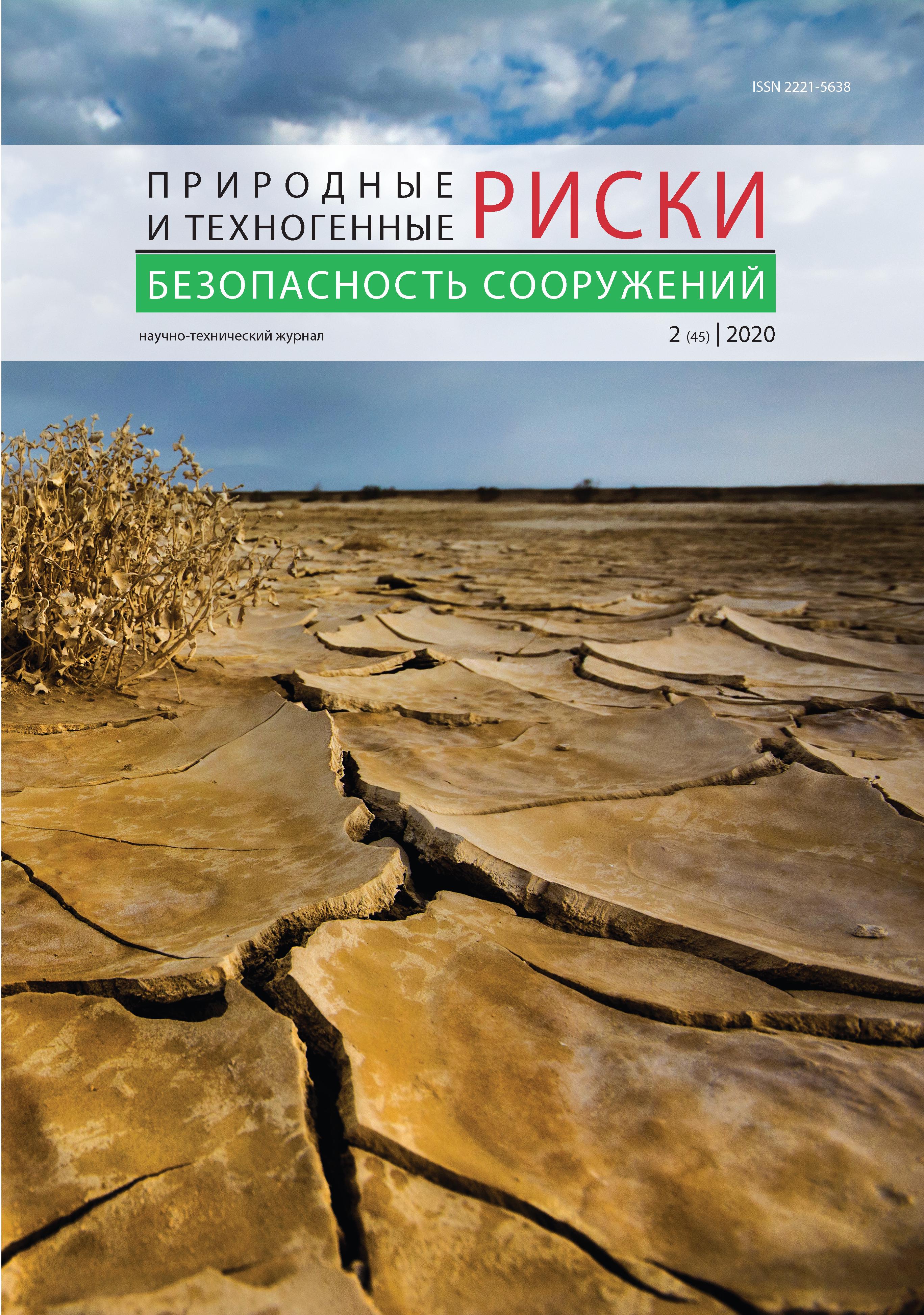Theoretical and experimental studies
Energy-based characteristic of seismic action
Authors: Uzdin A.M., Sibul ' G.A., Prokopovich S.V., Dolgaya A.A.
Key words: seismic resistance, energy-based seismic design, seismic action, seismic energy, peak ground acceleration, seismic intensity scale, plastic forces» work, maximum design earthquake
In this paper a new characteristic of seismic impact assessment which has been termed plastic forces» work is suggested. It is founded on an energybased seismic design principle, according to which construction behavior during an earthquake depends on the amount of energy gained in the system. This energy is evaluated on the basis of its possible per-unit work. An analysis of plastic forces» work has been carried out for a database of 91 real earthquake accelerograms. Based on this characteristic, it is shown that broadband and high-frequency actions are dangerous for structures of various classes.
Some power characteristics tool records of stations engineering and seismometric service in the 18 march 2018 earthquake
Authors: Lapin V.A., Yerzhanov S.Y., Aldakhov Y.S.
Key words: instrumental records, accelerograms, energy characteristics, seismic stations
The energy characteristics of instrumental records (Arias integral and cumulative absolute speed) are determined for two buildings equipped with engineering-seismometric stations. Instrumental records of a 4‑point earthquake, recorded at KazNIISA JSC engineering-seismometric stations No. 1 and No. 11 on March 26, 2018, were used. The significant differences of up to 10 times were found in the values of energy characteristics for both buildings located on the same type of soil. It is assumed that such differences are due to the inertial and stiffness characteristics of the rigid and flexible buildings. It was noted that instrumental records of ESS stations contain energy characteristics of both the impact and the building itself.
Safety of components, buildings and structures
Seismic isolation in the Republic of Kazakhstan: past, present and future
Authors: Yerzhanov S.Y., Lapin V.A.
Key words: seismic isolation, dry friction elements, rubber-metal blocks, robots, damping racks
The most used seismic isolation systems implemented in the Republic of Kazakhstan (Almaty) are considered: the newly developed systems based on planar robots, a system based on a bezelless frame on kinematic foundations, as well as promising systems using rubber-metal supports and supports made of rubber blocks. The use of different types of energy absorbers and damping racks is noted. It is recommended to continue research on the applicability of kinematic seismic isolation systems for a prefabricated bezelless frame in the seismic conditions of the city of Shymkent.
Optimization of parameters of seismic isolation systems of buildings and structures
Authors: Sorokina G.V.
Key words: stiffness, damping, seismic isolation, accelerogram, dry friction damper, friction coefficient, prevailing period, impact, with viscous friction
It is possible to ensure the effective operation of seismic isolation by optimizing its parameters — rigidity and damping. With low damping, significant displacements occur at the base level of the seismically insulated structure, while high damping leads to a decrease in the efficiency of seismic isolation according to the criterion of design accelerations of the structure. Weakly damped seismic isolation systems should be used with a reliable forecast of high-frequency imput at the construction site. It is shown that the seismic isolation system is better to re-damp than to under-damp.
Safety of earth structures, bases and foundations
Vibration isolation barriers of lightweight materials constructed in soil
Authors: Kholmyansky M.L., Dzhantimirov Kh.A.
Key words: vibration protection, geomaterials, vibration isolation barriers, soil-cement, waves in soil
Wave screening in soils by special barriers is a well-known though insufficiently studied vibration protection method for urban areas. There is a problem in combining their efficiency, the convenience of construction and durability. The vibration isolation barriers made of lightweight and soft geomaterials seems to be promising. The geomaterials may include soil-cement with low density and stiffness, polyurethane foam, aerated soil, etc. Methods of analysis are developed and calculations based on the one-dimensional theory of wave propagation in a three-layer medium «soil-barriersoil
» and numerical modelling by the finite element method. The example shows the effectiveness of vibration protection barrier made of light and flexible geomaterials: for the frequency of 50 Hz, which is typical for the subway train effects; a 1 m thick barrier and 5 m deep vibration isolation barrier reduces displacements by 3 or more times.
Safety of hydraulic structures
Features of calculation of a gravitational support wall for seismic load taking into account the determining factors
Authors: Minaev O.P.
Key words: retaining wall, stability, sand filling, Foundation, soil liquefaction, vibrodynamic compaction
Doctor of Technical Sciences, Professor O, A. Savinov (VNIIG named after B. E. Vedeneev) was the scientific editor of the normative document on construction in seismic areas.
In developing the well-known solution, the author of the article based on the calculation of the retaining wall for seismic impact introduces a condition to prevent liquefaction of sandy soil backfill and sand cushion at the base of the retaining wall, which will cause a catastrophic loss of stability of the retaining wall and the bearing capacity of the base.
Safety auditing. Risk assessment and management
Damage state evaluation of the building subjected to an earthquake using nonlinear static method
Authors: Ivanov A.Yu.
Key words: economic damage state, nonlinear static Pushover-analysis, game matrix, base-isolated building
The economic damage state evaluation method for the building subjected to an earthquake is proposed. Damage state is defined with the help of nonlinear static pushover analysis based on capacity curve of the building. With the aid of such kind of analysis game matrix elements can be calculated, which is used for economic effect estimation in earthquake engineering. Such updating allows to minimize the uncertainty in damage state evaluation considering only statistical data obtained from elapsed earthquakes.

